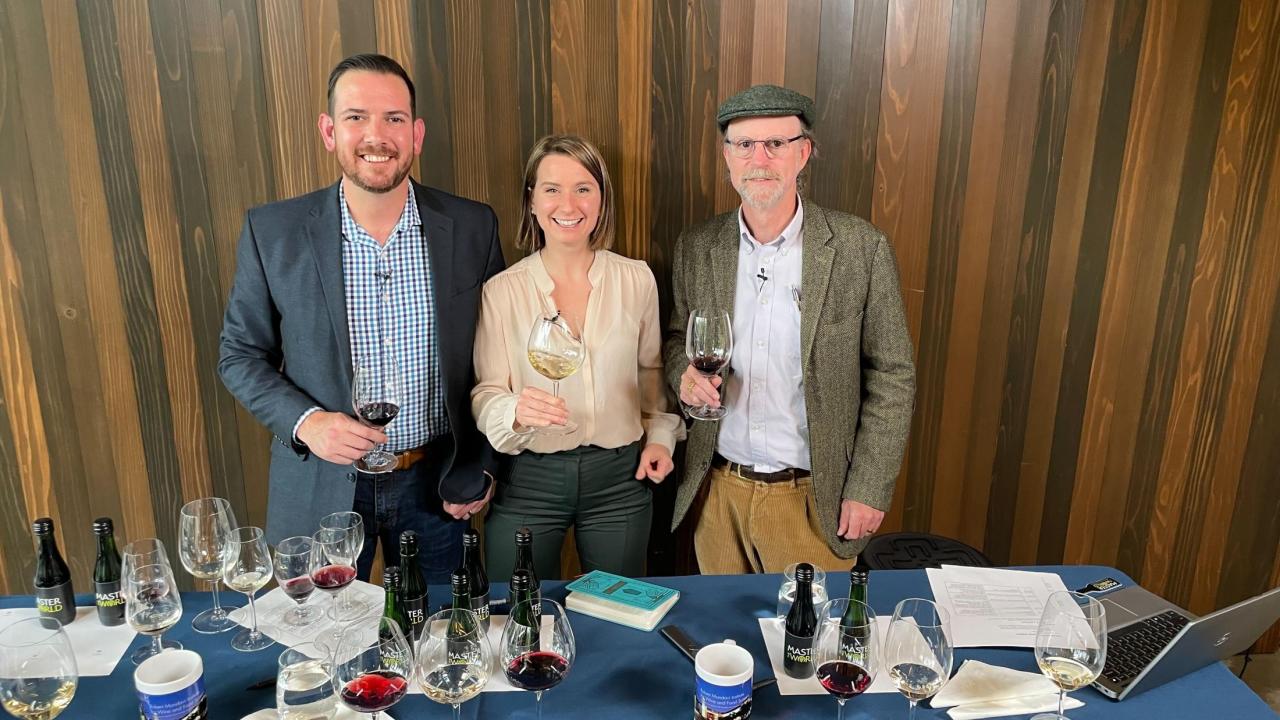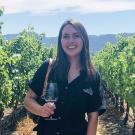
Drinking Wine, for Science!
If you’re a wine drinker like me, you probably have some fundamental knowledge about grape varieties. For example, Sauvignon Blanc makes white wine and Pinot Noir makes red wine, right? Well, it depends!
The Orange vs. Red, Tasting Experimental Wines event by the Robert Mondavi Institute for Food and Wine Science challenged preconceived notions (like all Sauvignon Blancs are white). It showed the power of manipulations in the winery while processing grapes into wine. The tasting was led by Dr. Andrew Waterhouse, wine chemist and Director of the RMI, Dr. James Campbell, who earned his Ph.D. while studying tannins alongside Dr. Waterhouse and made the tasting’s experimental red Sauvignon Blanc wine, and Madeline Puckette, cofounder of Wine Folly. As Puckette exclaimed during the tasting, the event’s participants had the chance to “drink wine for science!”
In addition to the experimental wine, the tasting featured wines from around California. There were wines from Wade Cellars by Dwyane Wade, a new member of the UC Davis Viticulture and Enology Department Executive Leadership Board, Navarro Vineyards, a family-run winery by UC Davis alumni in Mendocino County, and Hobo Wine Company, who provided the orange wine of the night.
During the event, the audience was given various wines and shown how to approach tasting the wines by the panel’s resident sommelier, Madeline Puckette. Tasting notes ranged from the usual flavors of citrus and red fruits to the more unusual notes of Barbie doll hair and ashy cheese. The audience had the chance to guess the grape variety, which was often challenging with red Sauvignon Blanc and white Pinot Noir in the mix!
The orange wine of the night, provided by Hobo Wine Company, alluded to the origins of winemaking. When wine was first made, resources like stainless-steel tanks were not available, and subsequently, white wines experienced more oxidation (and had more oxidative flavors) than contemporary wines. Meanwhile, the white-colored Pinot Noir, or “Blanc de Noir,” made by Navarro Vineyards, showed how different a red grape could taste when fermented with only the white juice and without the red grape skins. The red Sauvignon Blanc was an experimental wine in Dr. Campbell’s research to understand how anthocyanins influence tannin extraction. The Sauvignon Blanc had added grape pigments responsible for the wine’s deep garnet color. In his research on this wine, Campbell found that anthocyanins are critical for tannin extraction in wines.
It’s not every day that one gets to drink wine for science, let alone such rarities as red Sauvignon Blanc or white Pinot Noir! If you didn’t have the chance to attend the event, you can watch it on the Robert Mondavi Institute’s website while sipping your wine of choice. After watching, like me, you will never look at a red or white wine the same again and will have a much deeper appreciation for the vast science that contributes to each glass of wine to create the sensory experiences we know and love.
To view the video recording of the event, visit the Sips and Bites webpage.

Kendal Koorenny is a current master’s student in the viticulture and enology program at UC Davis. She adores food, wine, and science and writing about it all! When she is not in class or working, you can find Kendal reading a book, crafting a new cocktail recipe, or spending time with her kitten.
